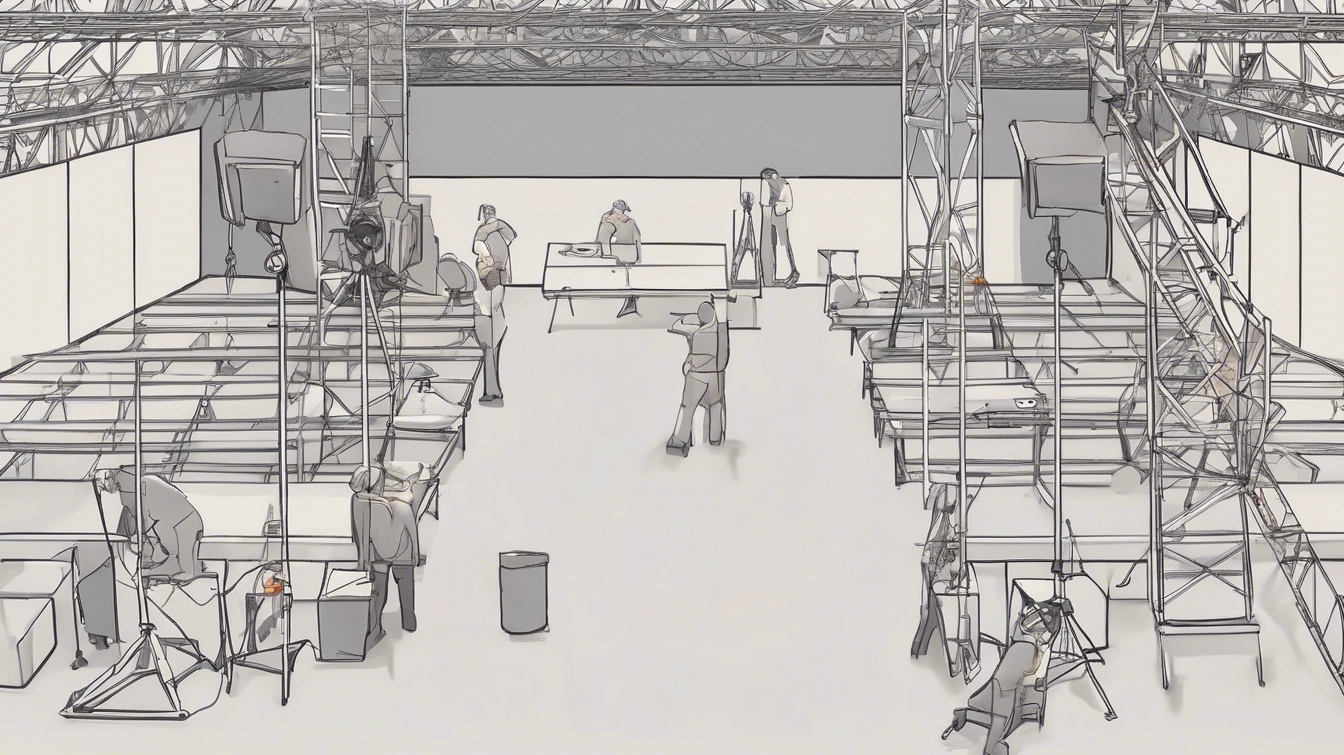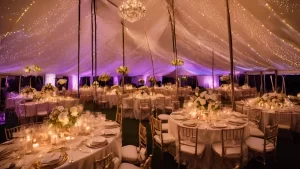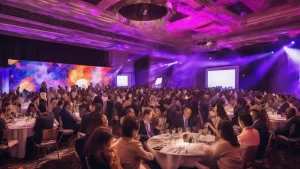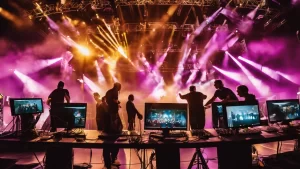At Ramar Event Productions, we don’t just show up with lights and hope for the best. We produce. That means planning, prepping, problem-solving, and executing every detail with precision. Whether it’s a simple install or a full-scale transformation, every job has layers of complexity that most people don’t see.
Here’s a behind-the-scenes look at what it really takes to bring your vision to life — safely, on time, and on point.
🧠 1. Planning Starts Long Before the Event
From the moment we get the call, the clock starts ticking. We gather key info like date, location, venue rules, power access, ceiling height, guest count, and more. If it’s a last-minute job or during peak season, we fast-track our internal systems and begin checking equipment and crew availability instantly.
💪 2. Site Visits, Logistics, Strict Venues & Environmental Challenges
A site walkthrough is more than just a quick peek. We measure ceilings, check loading docks, inspect power sources, and identify any red flags — like narrow stairwells, shared loading zones, or strict union rules. Some venues require COIs, lift-certified operators, or allow access for only a few hours. These factors affect how we plan, how many staff we need, and how long the job will actually take.
Weather, Site Readiness & Delays are also major variables. Outdoor venues can be delayed or altered due to rain, wind, or heat. Some venues may not be site-ready at the promised time — tents might not be up, power may not be installed, or other vendors may still be occupying the space. These situations can create delays, force timeline changes, or require additional crew to make up for lost time. That’s why flexibility, experience, and quick problem-solving are critical to keeping the event on track.
Site Installation Timing can also become a major factor. Many venues only allow load-in or load-out during a tight window — sometimes as little as 2–4 hours. This compressed timeline means we often need to increase staffing, split the crew into specialized units, or bring in experienced installers to meet the deadline without sacrificing safety or quality. A site walkthrough is more than just a quick peek. We measure ceilings, check loading docks, inspect power sources, and identify any red flags — like narrow stairwells, shared loading zones, or strict union rules. Some venues require COIs, lift-certified operators, or allow access for only a few hours. These factors affect how we plan, how many staff we need, and how long the job will actually take.
⚙️ 3. Custom Design, Gear Allocation, Equipment Availability & Scope of Work
Every design is unique, and so is the gear behind it. Sometimes we’re pulling pipe and drape, uplights, and pin spots. Other times we’re fabricating custom structures, floating chandeliers, or rigging large pieces from barn beams or ballrooms.
The scope of work dramatically impacts planning. There’s a big difference between setting up 2 fixtures versus 50. Larger-scale jobs require:
More crew
More prep time
Larger transport
Longer setup windows
Additional safety checks
If the job calls for lifts, scaffolding, or specialty rigging, we account for equipment rental, permits, and labor. During peak seasons, inventory may be limited — so we build around availability while staying true to your vision.
🔧 4. OSHA Compliance, Specialty Equipment & Safety Protocols
We don’t cut corners — we follow safety standards to the letter. OSHA requires a person for every 6 feet of ladder height. That means for a 20-foot ladder, we need a ladder tech, two ground supports, a spotter, and a director. That’s 5 people — just to safely hang one chandelier.
The same goes for lift operation, rigging, and ceiling work. Safety drives staffing and pricing — and protects everyone on-site.
Common specialty equipment includes:
Scissor lifts (for high ceilings)
Scaffolding (for uneven terrain or tents)
Rigging hardware (clamps, shackles, cables)
Tall ladders with stabilizers
Power distro units
🚚 5. Travel, Tolls, Hotels & Transportation
Every job away from our home base comes with added logistical expenses:
🚛 Trucking Fees
⛽ Fuel & Tolls
🅿️ Parking Permits or Paid Lots
🏨 Hotel Stays for crew
🍽️ Per Diems for meals on long jobs
City-based venues like NYC or Boston often require additional coordination, permits, and higher expenses. We plan for that up front so you’re never surprised.
⚡ 6. Same-Day Setups & Strikes
Some venues give us 12 hours to load in, set up, and break down — and that’s it. These jobs require double staffing, overtime labor, specialized crew rotations, and tight scheduling. It’s an all-hands, high-efficiency effort that leaves no room for mistakes.
Example: A ballroom may allow load-in at 8 AM, with everything needing to be installed by 4 PM. The event ends at midnight, and all production elements must be removed by 2 AM. That’s two shifts of staff, precise transportation, and full warehouse coordination.
💸 7. The Real Cost of Execution
Even if a service is removed or a scope reduced, changes still require planning, updates to crew schedules, revised packing, and often new gear configurations. Omitting a service does not always reduce the workload — in many cases, it simply shifts responsibilities or timing elsewhere in the production chain. Whether you’re scaling up or adjusting down, changes impact labor, logistics, and coordination — all of which still factor into the final cost. The final cost of a job includes far more than just lights and drape. Here’s what your investment actually covers:
Gear availability and prep
Specialty equipment (lifts, scaffolding, rigging)
Labor (including overtime, strike crew, and certified operators)
OSHA compliance and safety staff
Trucking, gas, tolls, parking, and hotels
Custom fabrication and materials
Quantity of gear — from 2 fixtures to 50, every piece matters
Time, strategy, and coordination
🛠️ Real-World Example
A client wanted floating chandeliers above a dance floor in a barn with 20-ft beams. To do it safely and legally, we needed scaffolding and certified rigging hardware. OSHA regulations require a person for every 6 feet of ladder height — so for a 20-ft ladder, that’s a minimum of 3 team members just for support, plus the person on the ladder. We also needed an additional spotter and runner on the ground.
Add in the scaffold setup, test runs, and overnight safety protocols, and it became a full-day prep and strike. Every role had a purpose — not just to get it done, but to get it done right.
🧩 No Two Jobs Are the Same
Every event is a fresh build from the ground up. No two jobs are the same, and no two venues are the same. Each space comes with its own character, challenges, and rules — from ballroom restrictions and barn ceilings to tight city docks and uneven tent fields.
This means every quote is custom, every crew assignment is strategic, and every setup is thoughtfully engineered. It’s not one-size-fits-all — it’s purpose-built, every time.
🎯 The Ramar Promise
When you hire Ramar Event Productions, you’re not just getting a service — you’re getting a committed team that treats your event like our own. We don’t upsell. We don’t wing it. We plan, protect, and produce.
We believe in transparency, and we’ll always help you understand exactly where your investment goes.
Let’s build something unforgettable — the right way.




